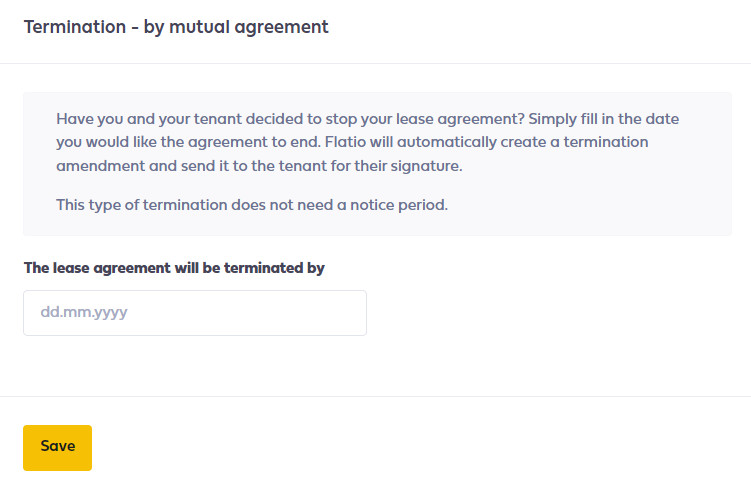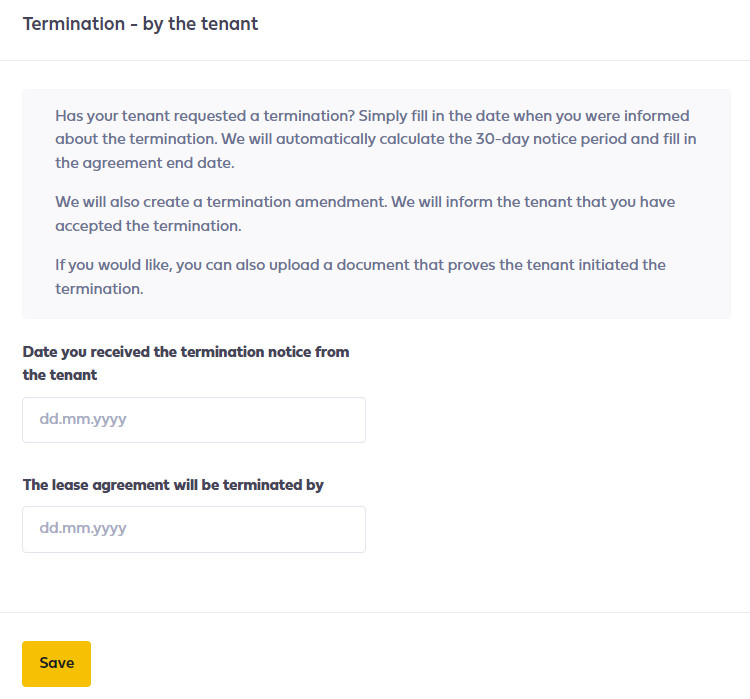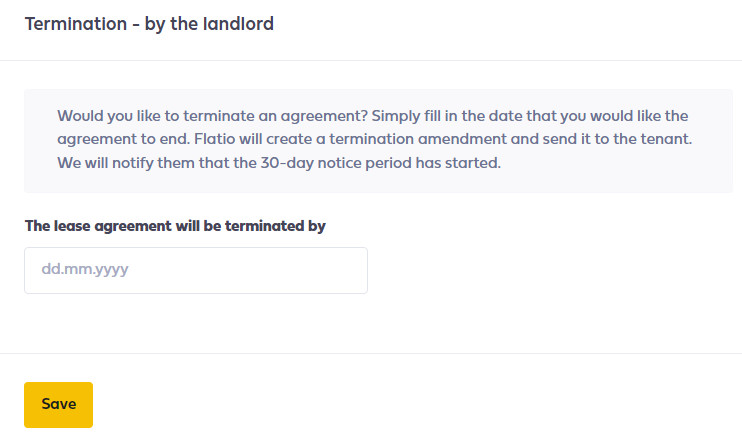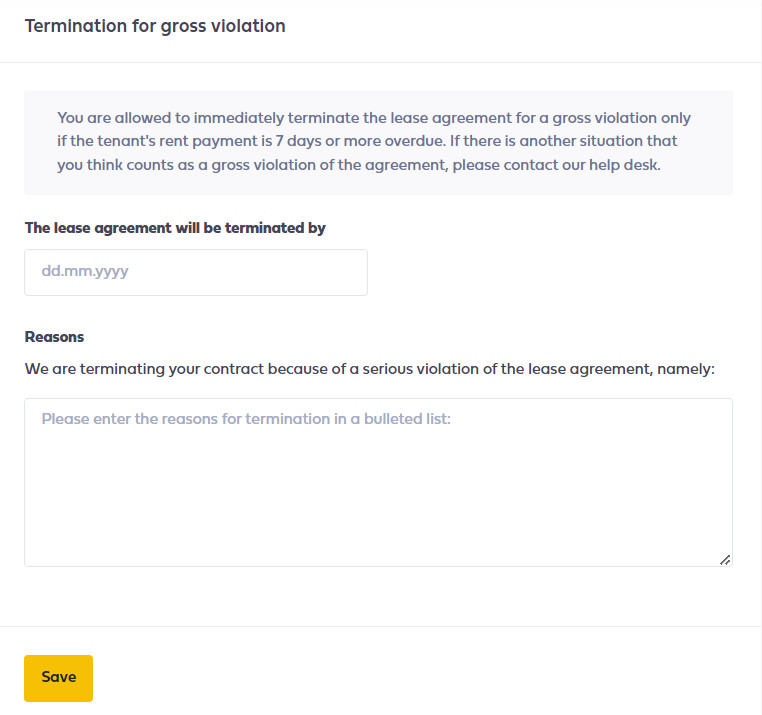This article contains detailed information about every available termination type. See in what situations they apply and how they can be created.
How can I shorten a lease agreement? (Termination guide)
For different reasons, hosts may want to shorten the lease agreement they have signed with a guest. This step-by-step guide will help you understand how to shorten the lease agreement, and when you should choose which termination type.
How to terminate the lease
Terminating a lease can be easily done from your profile in the My Rentals web app:
- Go to the "Guests" section via the top menu and open the details of the specific guest.
- Click on the "Agreements" tab to see the lease agreement(s) you have signed with this guest.
- Click the "Detail" button next to the specific lease agreement you want to shorten.
- Click on the "Terminate agreement" button.
- Select the termination type and enter the needed information.
- Save the changes.
Termination types
There are multiple termination types from which you can choose. Let's see what each one means and in which cases you should select it.
1. Termination by mutual agreement
This termination type should be selected when both you and the guest agree on terminating the lease by an earlier date.
If this situation arises, it will be up to you to submit the termination, as guests cannot do so. When submitting this termination type, you will need to choose the new move-out date.

After you save the changes, the termination document will be automatically created in our system in the form of an amendment and will appear in the guest's profile. Then it's up to the guest to sign the termination document. It'll become valid only if the guest signs it, as it relies on the mutual agreement.
Important notes
- After the termination document is created, the rents are automatically re-calculated.
- If there is an overpayment because of this, the host is obligated to refund the proportional part to the guest, including the Host fee paid to Flatio. After they have done this and Flatio has received confirmation of the refund, we will pay the Host fee back to the host. (This procedure is designed and should be completed this way for accounting reasons.)
- If the guest still hasn't paid any due payment, the rents will also be re-calculated. For example, if the guest should have paid 1000 € for the next month but the lease agreement was shortened, the due payment will be changed according to the number of days the guest will actually stay in the accommodation.
- Overall, the guest pays only for the days when the host's calendar is blocked in terms of availability due to the lease agreement, i.e. until the move-out date, including the move-out day itself.
2. Termination by the guest
This termination type should be selected when the guest wishes to terminate the lease, whereas you are against this change.
Please note that either the guest or the host can submit this termination. If the guest doesn't do this, we recommend that you as the host go to your profile and create the termination document on behalf of the guest. Submitting it as soon as possible is important for your listing to become available on the website quickly, increasing the chance of finding another guest to book the property for the canceled period.
If you submit this termination type from your profile, you will need to fill in the date when you received a termination notice from the guest. Flatio will then automatically calculate and enter the new move-out date, which is 30 days after the notice was received, unless you fill in the "The lease agreement will be terminated by" field yourself. In that case, we'll use the date you entered.

Important notes
- The 30-day notice period means the guest is obligated to pay for that entire period. They may have already paid the rent for a number of days in advance, but they must also pay the rest of the rent due so that all 30 days are paid for. When this termination is submitted, the rental payments will be recalculated automatically.
3. Termination by the host
This termination type should be selected when you wish to terminate the lease, whereas your guest is against this change.
If this happens, it's up to you to submit the termination, as guests cannot do so. When submitting this termination type, you will need to choose the new move-out date.

Important notes
- There is a 30-day notice period during which you're obligated to let the guest use the property according to the lease.
- When this termination is submitted, the rental payments will be recalculated automatically. The guest will be obligated to pay only for the dates when your listing will be blocked by the lease, which is until the new move-out date.
4. Termination for gross violation
This termination type will be visible to you only if the guest is 7 days or more late with the rent payment. However, if you'd like to use it for another reason (for example, if the guest broke the house rules by smoking, partying, bringing pets, disturbing the neighbors with loud music, etc.), you can contact our Support team, after which we'll investigate your reasons. If proven valid, we'll create the termination on your behalf.
However, if you submit the termination from your side, you need to select the date when you want the lease agreement to end and also state the reason(s) for the termination.

Important notes
- By default, this kind of termination takes place with a 3-day notice, meaning the lease agreement will be terminated 3 days after you create the termination document.
- If you want to terminate the agreement for gross violation for other reasons than the guest being 7 days or more late with the rent payment, the notice period can be shorter than 3 days (for example, it can be only 2 hours). However, it always depends on the specific situation.
For more information on terminating a lease agreement, visit this page.

